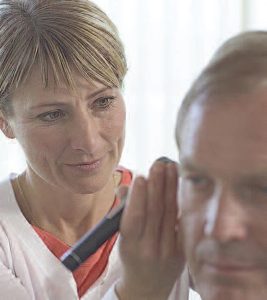FOR YOUR HEALTH: How Accident Victims Can Find Justice
 (NAPSI) — According to the National Safety Council, an American is accidentally injured every second by a preventable event, a vehicle crash, a fall or the like. If you or someone you care about is ever among them, there are things you should know.
(NAPSI) — According to the National Safety Council, an American is accidentally injured every second by a preventable event, a vehicle crash, a fall or the like. If you or someone you care about is ever among them, there are things you should know.
One Man’s Story
“I was a victim twice,” says Jose V., as he recalled his five-year ordeal that began at a construction site. “First, the day I was working to off-load a 3,000-pound bag when, all of a sudden, the operator lifted the cables and my fingers were mangled and the doctor had to remove three of them,” he explained. “Then, I found out this was only the start of my problems and I would become a victim again. My bills were getting out of control, I was about to lose my apartment, and I had no idea how I would care for my family. I was depressed and scared. Even now I get shaken up thinking how bad it was.”
Jose is not alone. He is one of tens of thousands of average, everyday people from around the country who each year find themselves battling insurance companies and other deep-pocket defendants who delay settlement of legitimate insurance claims.
“When you are physically damaged and struggling for almost five years to regain your strength and your ability to work, it takes a mental toll,” said Jose. “Bills piled up fast and the settlement was very slow in coming. There was one delay after another. I was just determined not to give up, and between the support I got from my family and the advance I received from LawCash, I did not have to accept a lowball settlement. The longer they delayed resolving the case, the more concerned I became about being on the street. If it were not for the money I was advanced over the five years it took to settle, my children would have suffered even more and the greater the pressure I would have been under to accept whatever amount I was first offered,” he added.
For Jose, as with thousands of Americans each year, financial relief came in the form of what the legal community calls pre-settlement funding. According to Harvey Hirschfeld, president of LawCash, “Our firm is in the business of leveling the playing field for consumers whose meritorious claims are being delayed. With cash on hand to pay for life needs such as rent and general living expenses, managing cash flow, and securing medical care while awaiting settlement of their case, victims are in a stronger position and don’t have to simply accept the amount a company’s insurer initially offers.”
How It Works
The company does not promote or encourage litigation. All its clients must be represented by legal counsel and must have filed a legitimate claim before it will accept an application. Nor does it influence the case itself, as all decisions related to the legal approach and overall strategy are between the victim and his or her attorney.
Perhaps most importantly, the pre-settlement funding—a minimum of $500—is not a loan. If the case is lost, claimants owe nothing. In addition, they’re not required to put up collateral or make interim payments, and the advance has no effect on their credit.
“My doctors repaired my hand,” said Jose. “LawCash allowed me to live. Since I didn’t have to take a lowball settlement, my lawyer was able to keep up the fight for me and my family. This resulted in a fair settlement for many times more than I would have gotten if I had to settle early. For a portion of my total settlement, I was able to protect my future and my family.”
Learn More
For more facts or to apply, go to www.lawcash.net or call (800) LAW-CASH.


 The Red Cross can reconnect loved ones when:
The Red Cross can reconnect loved ones when: Detector dogs help human inspectors catch incoming materials that may be otherwise overlooked. Through their keen sense of smell, the dogs can quickly scan unopened bags and alert USDA and Customs officials as to which ones should be hand-inspected. In fact, dogs are able to detect a single scent among many overlapping ones. And, on average, they have hundreds of millions of scent-detecting cells, as compared to humans, who only have five million.
Detector dogs help human inspectors catch incoming materials that may be otherwise overlooked. Through their keen sense of smell, the dogs can quickly scan unopened bags and alert USDA and Customs officials as to which ones should be hand-inspected. In fact, dogs are able to detect a single scent among many overlapping ones. And, on average, they have hundreds of millions of scent-detecting cells, as compared to humans, who only have five million. Based on the federal government’s guide to forming healthy dietary habits, MyPlate for Older Adults makes good nutrition easy. Even better, it helps seniors with fixed incomes select healthy foods within their budget. That includes showing how frozen, dried and canned fruits and vegetables can be wise alternatives to fresh produce.
Based on the federal government’s guide to forming healthy dietary habits, MyPlate for Older Adults makes good nutrition easy. Even better, it helps seniors with fixed incomes select healthy foods within their budget. That includes showing how frozen, dried and canned fruits and vegetables can be wise alternatives to fresh produce. Skin is the body’s largest organ. It protects the other organs, makes you sensitive to touch and literally keeps you from evaporating. If it’s itchy, dry and cracked, it can affect your health and happiness.
Skin is the body’s largest organ. It protects the other organs, makes you sensitive to touch and literally keeps you from evaporating. If it’s itchy, dry and cracked, it can affect your health and happiness. 3. Drink plenty of water: Just like the rest of your body, your lips need nourishment. Be sure to pack a large refillable water bottle
3. Drink plenty of water: Just like the rest of your body, your lips need nourishment. Be sure to pack a large refillable water bottle Better hearing starts in the brain. Your brain processes and interprets the sounds your ears receive. When you have hearing loss, your brain doesn’t get all the sound information it needs to understand what’s being said and it spends more energy trying to fill in the blanks. That extra effort can take its toll.
Better hearing starts in the brain. Your brain processes and interprets the sounds your ears receive. When you have hearing loss, your brain doesn’t get all the sound information it needs to understand what’s being said and it spends more energy trying to fill in the blanks. That extra effort can take its toll.